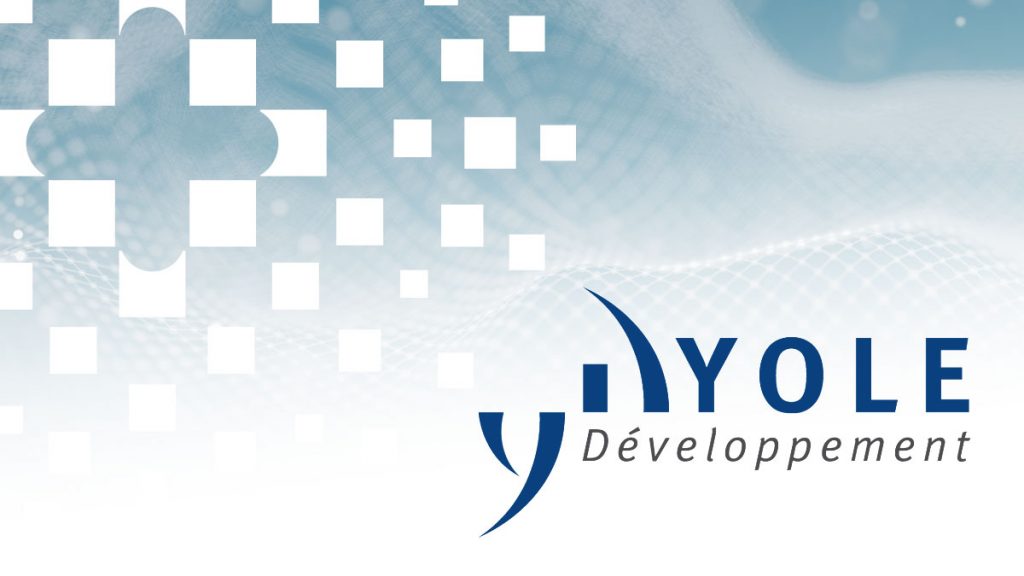This market research report was originally published at Yole Développement’s website. It is reprinted here with the permission of Yole Développement.
Yole Développement has recently published its reports, “Status of the CIS industry 2019” and “3D Imaging & Sensing 2020” and maintains a continuous analysis of the chain of events in this prolific domain. System Plus Consulting has also published several reverse costing reports recently, analyzing Sony’s 10µm and 5µm indirect Time-of-Flight (iToF) devices in the reports “Sony’s 3D Time-of-Flight Sensing Solution in the Huawei P30 pro” and “Samsung Galaxy Note 10+ 3D Time of Flight Depth Sensing Camera Module“. Now, thanks to the teardown of Apple’s latest product, we are now pleased to bring you the hottest news about the iPad Pro LiDAR.

Finally the teardown got the news out. The LiDAR camera of the new iPad Pro has got all of us excited. Unfortunately, from outside the chip design looked somewhat similar to an old indirect Time-of-Flight (iToF) design with 10 micron pixels. But once we studied the cross-section an all-new story unfolded. In front of us lies the first ever consumer CMOS Image Sensor (CIS) product with in-pixel connection – and, yes, it is a single photon avalanche diode (SPAD) array. There was a space race for this new generation of 3D sensing chip, but so far, everyone thought that the winner would be for ST Microelectronics, Yole Développement included.

ST Microelectronics had its “Sputnik moment” in 2017, when the world discovered they were chosen for the TrueDepth camera in the iPhone X. The SPAD array, or direct Time-of-Flight (dToF), camera was therefore on the roadmap of all CIS players. ST Microelectronics seemed to have the lead in this domain, as it was already shipping millions of SPAD detectors. This was until Sony’s technology dominance entered the race. In three years’ time Sony’s process engineers realized what many thought impossible in other places. They brought to reality a product that will probably have long lasting consequences in the consumer world but also in industrial robotics, automotive, in short all sensing markets.
A year ago, when Sony renamed its semiconductor division “Imaging & Sensing”, the sensing part was limited to Industrial Machine Vision image sensors, which remained a high-end niche market. Then it made two separate moves. The first was the supply of iToF sensors to Huawei and Samsung, generating in the order of $300M in 2019. The second was this design win of dToF sensors for Apple iPads, which could eventually end up in iPhones. Sony’s sensing revenues will probably exceed $1B in 2020 out of a business just surpassing the $10B landmark. This successful transition from imaging to sensing has been instrumental to Sony’s continuous strength in the CIS market. It will be a building block for the prosperous future of the division.
![]()
So what about the future of ST Microelectronics’ dToF products in this context? From the last quarter’s results ST Microelectronics’ ams division is doing extremely well, so the dToF array is probably not an opportunity it could have handled on its own. It would have required much more capital expenditure beyond what ST Microelectronics is already put out for its CIS business. Nevertheless this Apple–Sony move will open up opportunities for ST Microelectronics as well. It could indeed launch an unexpected mission of its own. Market dominance is not just a technology race – it is also a game of capital expenditure, and in this game the biggest player almost always wins.
In term of technology innovation, the LiDAR module of the new iPad Pro is as packed as the Apollo program’s pioneering Eagle lander. In a small footprint it is a complex optical module, holding the sensor, a Vertical Cavity Surface Emitting Laser (VCSEL) and a VCSEL driver.

The Sony’s 30K resolution, 10µm pixel size sensor is indeed using dToF technology with a SPAD array. The in-pixel connection is realized between the CIS and the logic wafer with hybrid bonding Direct Bonding Interconnect technology, which is the first time Sony is using 3D stacking for its ToF sensors. Deep trench isolation, trenches filled with metal, completely isolate the pixels.

Apart from the CIS from Sony, the LiDAR is equipped with a VCSEL from Lumentum. The laser is designed to have multiple electrodes connected separately to the emitter array.

A wafer level chip scale packaging (WLCSP), five-side molded driver integrated circuit from Texas Instruments generates the pulse and drives the VCSEL power and beam shape. Finally, a diffractive optical element is assembled on top of the VCSEL to generate a dot pattern. The detailed analysis of the new iPad Pro’s LiDAR module will be available soon in a reverse costing report from System Plus Consulting.
Pierre Cambou
Principal Analyst, Photonic and Display Division, Yole Développement
Taha Ayari
Technology & Cost Analyst, System Plus Consulting


